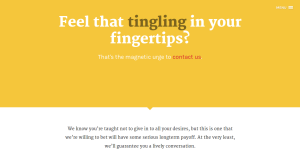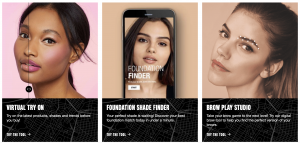— January 12, 2019

FirmBee / Pixabay
An End-to-End Approach
Paid search gives advertisers the unique ability to send a large amount of qualified traffic to their web properties with just the flip of a switch. In the world of digital marketing, this is a powerful capability, but the speed with which paid search campaigns can be created can sometimes lead to strategies that overlook the importance of developing a coherent and audience-driven theme into the messaging used in every step of your account’s creation.
That is why it is so important to start every new paid search initiative with a careful consideration of who you will be targeting with your ads, and ultimately, the goals you have in mind for this traffic. By developing a solid understanding of these things, advertisers can begin building end-to-end messaging strategies that seamlessly carry your paid search strategy from your audience to your ads, and finally, through to your targeted landing page.
In this guide, we will walk you through the process of using the end goal of your campaign to reverse engineer your messaging and the audience you will need to leverage in order to support it, along with how you can use this process to develop a more cohesive strategy that maximizes the success you can expect from your paid search initiatives.
Understanding Your Goals
When building a paid search strategy, the first priority should always be to develop a solid understanding of what action you would like to drive on your site and how taking this action can benefit your targeted audience or persona. Are you trying to increase downloads of a gated asset? Perhaps you would like to drive more software demos for your sales team? In any case, take a look at your ultimate goal and put yourself into the shoes of someone who would benefit from taking this action. This will be your targeted persona. Ask yourself how this persona will ultimately benefit from taking this targeted action. Take this process a step further and consider what makes this specific persona unique. Do they have any challenges that your targeted offer helps address? Is there anything that may prevent them from taking action on your site? Using all of this knowledge, you can start to develop how you will target this audience as well as the messaging that you will be using.
Another thing you will want to consider is where this targeted action sits in your funnel. Are you trying to increase bottom-funnel leads on the site—or maybe you would like to improve the high-funnel visibility of a new guide or white paper that you have developed? Using this knowledge will help guide your hand as you select the method through which your ads are served (i.e., display versus search).
Determining Your Audience
Now that you understand exactly whom you will be targeting, as well as how completing your targeted action can benefit them, you can begin to build out your audience. There are many options to choose from when building a paid search audience, but for the purposes of this guide, we will briefly cover three high-level categories: Search, Display, and Remarketing. To illustrate our methodology, let’s imagine a campaign with the goal of promoting professional continuing education course enrollments to a targeted persona who is in the data management field and is looking for ways to increase their expertise in the industry.
SEARCH
Search targeting is determined by the keywords that are targeted in your campaign. In this example, use your knowledge of your data management persona, along with your understanding of what your specific courses can provide for this persona, to hypothesize queries that are likely to point them to your content. A few good questions to ask are:
- What would I search if I were looking for a course like this?
- What searches might bring in traffic that isn’t from this targeted persona?
It is also good practice to leverage a mix of match types, as well as a well built-out negative keyword list, to ensure only pertinent searches trigger your ads.
DISPLAY
There are a number of methods to target your display advertisements, but a general way to consider your display targeting is by thinking about how your target persona behaves online. If they tend to frequent certain sites, then you can leverage placements or even custom Intent and Affinity audiences. If they search specific queries, you can use keyword targeting. Your site’s analytics may even tell you whether they align with one of Google’s Affinity or Intent audiences. Use a mixture of these targeting methods to find the audience that works for your ads.
Quick Tip Display targeting generally performs better when paired with higher funnel conversion actions.
REMARKETING
Finally, you can leverage the way that current traffic behaves on your site to develop targeted audiences. Using the example above, we could build an audience of individuals who have been to the data management section of our site to target with aligning messaging.
Developing Your Message
Now that we understand the goal we are supporting, as well as the audience we will be targeting, it is time to develop our messaging. In doing so, try to address a mixture of the what, why, how, and what about questions.
What: What are you offering to your audience?
This one is usually the easiest to address. In our example, it would involve clearly communicating what course we are advertising.
Why: Why should your audience care?
This one can be trickier. In our example, we could state that continuing education by taking the course we’re offering can make members of our audience more marketable and often leads to increased wages.
How: How will taking this action benefit your audience?
Try to communicate this section with real-world numbers: “Certified data managers can make up to X percent more in their lifetime.”
What About X? What may stop a visitor from converting?
Consider what anxieties your audience may have and use your content to ease those anxieties. This can be done with simple CTAs that call out how easy, cheap, or fast the course is.
Once you have written ads that cover each of the above aspects, try to mix and match them into several iterations. This will allow you to test the effectiveness of each messaging aspect, both individually and in conjunction with another. You will often find that some perform better than others, so be sure to use that knowledge to iteratively improve the performance of your copy.
Now that you understand how to effectively tie the right message to the right audience, you’re ready to launch a paid search campaign that is built from the ground up to support your marketing goals. Using this knowledge, you can be sure your media spend is driving reliably qualified traffic to your site.
Digital & Social Articles on Business 2 Community
(53)






